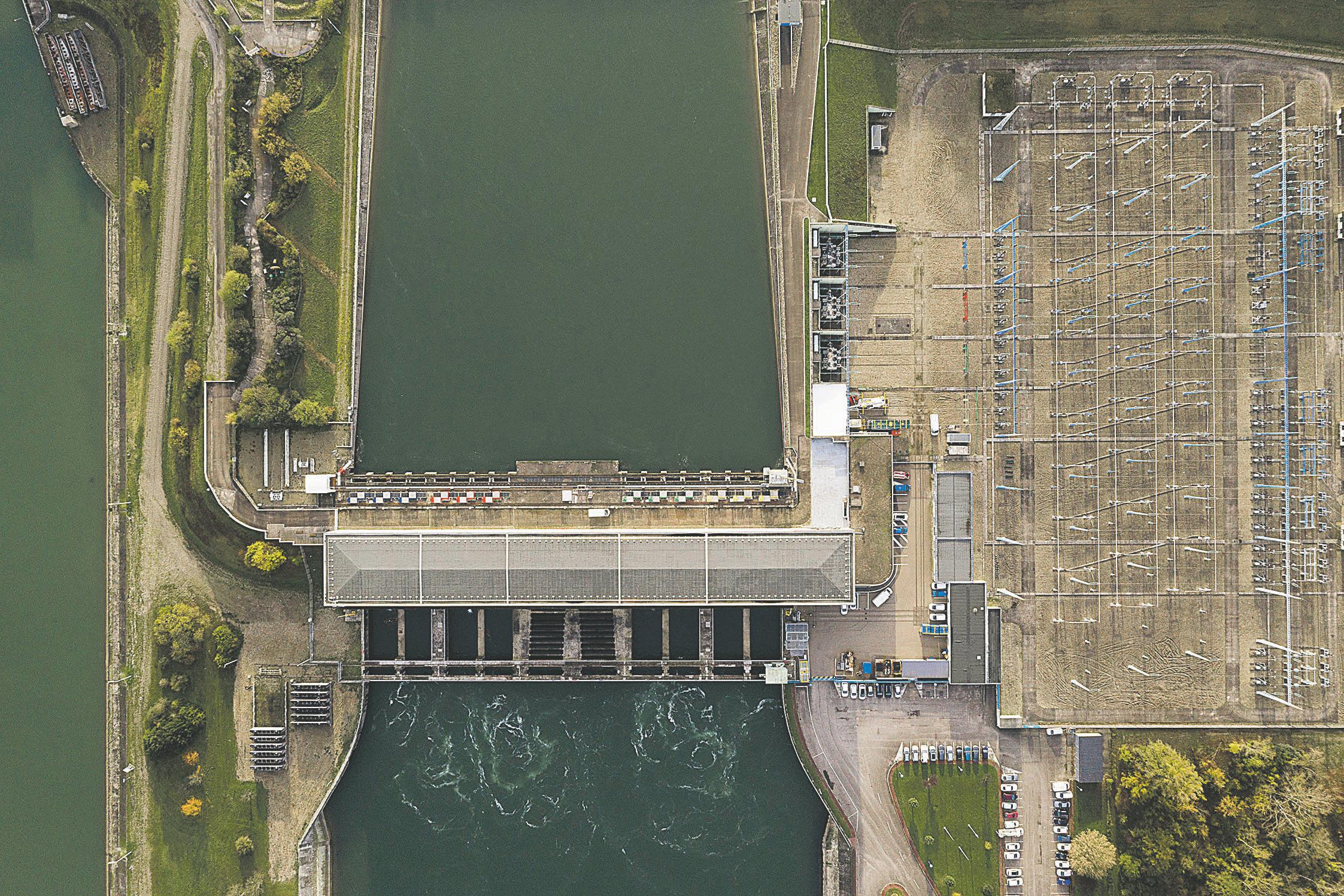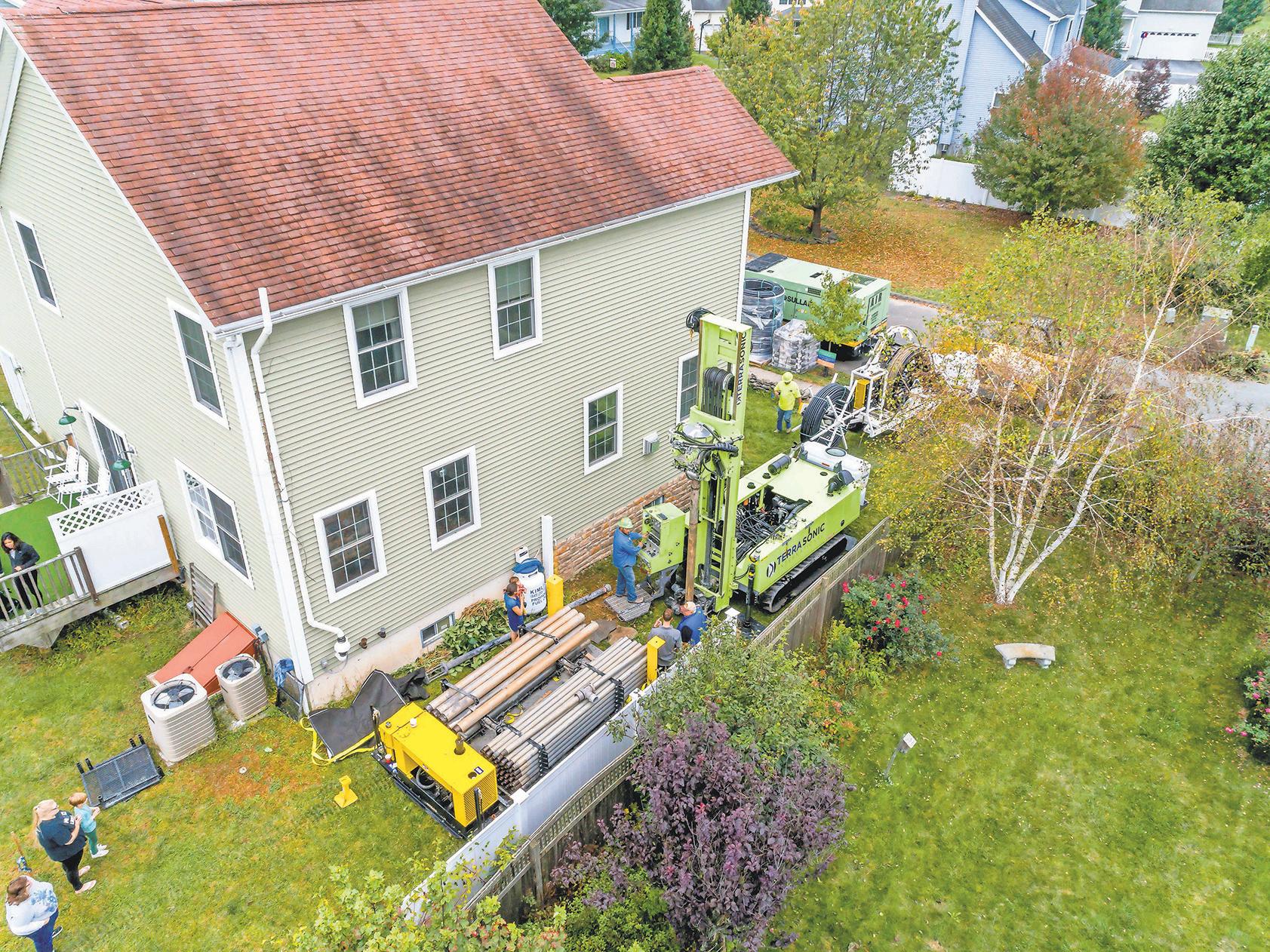
6 minute read
SUSTAINABLE SOURCES
INNOVATION
USATODAYSPECIALEDITION
Advertisement
Innovative Energy
Advances in blade size and turbine outputs are helping to make wind power more efficient.
By Adam Stone
DRIVEN BY TECHNOLOGICAL INNOVATION, alternative forms of energy just keep getting better.
“We have made tremendous progress in renewable technologies, and it has resulted in dramatically more efficient forms of energy, delivering power at less cost,” says Gregory Wetstone, president and CEO of the American Council on Renewable Energy .
People are eager to see such advances. In a recent study , business consulting firm Deloitte found 68 percent of consumers are very concerned about climate change and their personal carbon footprint. Nearly 6 in 10 businesses say they see the need to address climate risk.
Across the renewable-energy landscape, technological innovation is at work in five key areas: wind, solar, biopower, hydropower and geothermal. WIND
At the American Wind Energy Association, vice president of research and analytics John Hensley sees significant advances in wind power production.
“There has been a real effort to increase the efficiency of wind turbines, to enable (them) to capture more of the wind resource that flows across the blade and to convert that
PROVIDED BY TURNER & TOWNSEND
CONTINUED
USATODAYSPECIALEDITION

INNOVATION
USATODAYSPECIALEDITION
Electricité de France’s Vogelgrun hydropower plant demonstrates smart controls as part of the International Hydropower Association’s XFLEX HYDRO research project.

MATHIAS MAGG
to electricity,” he says. “That includes outfitting wind turbines with longer blades to enable the turbine to operate at their maximum capacity and to convert more wind to electricity, even at lower wind speeds.”
Turbines are also getting bigger and more powerful. Hensley pointed, for example, to the GE Haliade-X 13MW wind turbine , which produces a massive 13 megawatts of power per hour , versus older technologies that produced less than 2 megawatts.
Other rewable energy experts point to the development of innovations such as “floating foundation” turbines that could be established at sea. While present-day rigs can only be built in maximum water depths of 60 meters, a floating foundation “provides a route to opening the 80 percent of the world’s available area for offshore wind resources that are currently out of reach,” says Murray Rowden, managing director and global head of infrastructure for international consultancy Turner & Townsend . SOLAR
Solar cells can’t get much more efficient because of the physics involved. But there are still ways to improve on the conversion of sunlight into energy, says Bart Onsia, a business development manager for energy storage at Imec, a research and development hub for nano and digital technologies .
“One way is to top the silicon solar cells with an additional light-sensitive layer in another material — (adding) a second solar cell,” Onsia says.
Engineers also are looking at ways to boost energy production by incorporating materials that are sensitive to different parts of the light spectrum. In this scenario, “they don’t scavenge on each other’s conversion potential,” he says. “The material that captures the shortest wavelengths — blue and green — will be on top, while the bottom material converts the longer wavelengths, the red and near-infrared.”
CONTINUED
USATODAYSPECIALEDITION

USATODAYSPECIALEDITION
XXXXX INNOVATION

DANDELION ENERGY Improvements to pump-monitoring data and subsurface mapping are making geothermal power more efficient and less expensive.
With this approach, Imec has fabricated small solar cells surpassing 27 percent efficiency , versus the industry standard of 22 percent. “For 2035, we envision large, long-lasting cells with an efficiency of up to 35 percent,” Onsia says. BIOPOWER
The biopower industry burns agricultural waste to generate electricity. It can be a dirty process, and it’s not particularly efficient, but recent advances are driving improvements.
“The most important developments in bioenergy are the move away from direct combustion toward noncombustion conversion of organic waste,” says Julia Levin, executive director of the Bioenergy Association of California .
“The first generation of bioenergy facilities just burned waste: waste that would go to a landfill, or agricultural waste, or sawdust from a sawmill,” she says. “Combustion causes some pollution and is not very efficient, and the end products can only be electricity or combined heat and power, also known as co-generation.”
A newer approach known as “anaerobic digestion” overcomes these limitations. In this model, the waste goes into a sealed container. Bacteria eats the organic material and produces biomethane, which can be used as a replacement for fossil fuel gas.
Unlike the outputs of combustion, the gas can be stored for later use. The process is also far less polluting. “The newer technologies are much more efficient and much cleaner,” Levin says. HYDROPOWER
In the world of alternative energies, wind and solar have a drawback: They are variable. Sometimes the sun doesn’t shine, or the wind doesn’t blow. Advocates of hydropower say new advances could help to even out the availability of renewables.
“As the use of wind and solar increases, this will pose a challenge for grid operators to keep the system stable,” says David Samuel, a senior analyst at the International Hydropower Association . “Hydropower is naturally flexible. You can vary the amount of water that goes through the turbines. You can turn them off and on when you need them.”
To maximize this potential, the association is working on a project called XFLEX HYDRO . Funded by the European Union’s Horizon 2020 research and innovation program, the initiative is looking at ways to improve hydro energy production. “For example, it is looking at faster-response turbines, as well as smarter operations,” Samuel says.
These advanced systems would leverage automation to make hydro energy more responsive to surges in demand.
“They could react to different conditions on the grid,” Samuel adds. “A smart system could understand what the grid needs, and can operate the hydro plant in the optimal way to respond to those needs.”
Such “smart controls” would enhance the role of hydropower. “It would make it more competitive, especially for short-term, fast-response services,” he says. “And it will allow plant operators to run their facilities in a more efficient and flexible way.” GEOTHERMAL
Geothermal heating and cooling systems, also called ground source heat pumps, work by exchanging heat between a building and the ground. It’s efficient and emissions-free. For this to work properly, though, engineers need to align the ground portion of the system with the needs of the building.
Advances in heat pump-monitoring data and subsurface mapping are driving advances in the field, says Kathy Hannun, co-founder and president of Dandelion Energy , which develops geothermal heating and cooling systems.
These advanced systems enable geothermal engineers to “optimize the ground loop to the local geology, ensuring the customer gets high performance at an affordable price,” she says.
These technologies could also make geothermal more widely available. In the past, the cost of installation has limited geothermal’s appeal. “Using the best data and scientific models available to size this ground loop correctly saves customers thousands of dollars, and ensures their system will work well for decades to come,” Hannun says. Over time, this could make geothermal “not just affordable, but the most affordable heating option for many homeowners and building owners in cold climates.”
68%
OF CONSUMERS ARE VERY CONCERNED ABOUT CLIMATE CHANGE
SOURCE: Deloitte
USATODAYSPECIALEDITION









